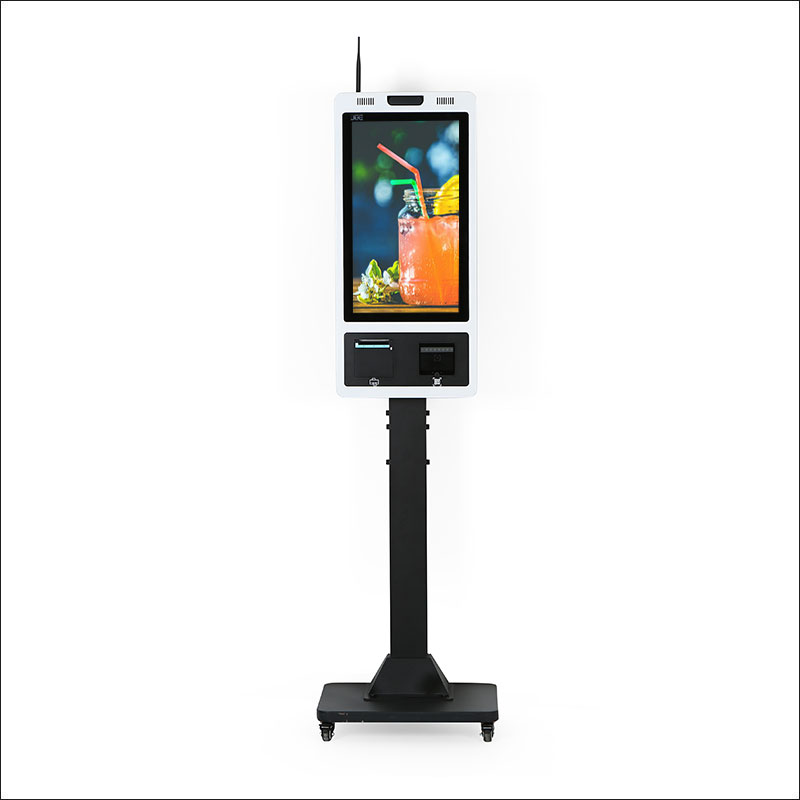Key Features of QSR Kiosks
2024-06-21
QSR (Quick Service Restaurant) kiosks are self-service touch screen systems that allow customers to place orders, make payments, and access various services without the need for direct interaction with staff. These kiosks are increasingly popular in fast-food chains, cafes, and other quick-service dining establishments due to their efficiency, accuracy, and enhanced customer experience. Here’s a detailed look at QSR kiosks:
Key Features:
1. Touch Screen Interface:
- Large, intuitive touch screens for easy navigation.
- High-resolution displays for clear visuals and easy reading.
2. User-Friendly Design:
- Simple, step-by-step ordering process.
- Multilingual support for diverse customer bases.
- Customizable menu layout to highlight promotions or popular items.
3. Integration with POS Systems:
- Seamless integration with the restaurant’s point-of-sale (POS) system for real-time order processing.
- Synchronization with inventory management to keep track of stock levels.
4. Payment Options:
- Supports various payment methods, including credit/debit cards, mobile payments (e.g., Apple Pay, Google Wallet), and sometimes cash.
- Secure payment processing to protect customer data.
5. Customization and Upselling:
- Allows customers to customize their orders (e.g., add/remove ingredients, choose portion sizes).
- Suggests upsell items and promotions during the ordering process to increase sales.
6. Order Tracking and Notifications:
- Displays estimated preparation times.
- Notifies customers when their order is ready for pickup.
7. Accessibility Features:
- ADA compliant designs for accessibility.
- Features like text-to-speech, high-contrast modes, and adjustable screen heights.
Benefits:
1. Efficiency and Speed:
- Reduces wait times by allowing multiple customers to place orders simultaneously.
- Streamlines the ordering process, leading to faster service.
2. Accuracy:
- Minimizes order errors by allowing customers to input their choices directly.
- Reduces miscommunication between customers and staff.
3. Customer Experience:
- Enhances the dining experience by providing a convenient and interactive way to order.
- Reduces perceived wait times, as customers can browse the menu at their own pace.
4. Cost Savings:
- Decreases labor costs by reducing the need for front-of-house staff.
- Increases operational efficiency, allowing staff to focus on food preparation and other tasks.
5. Data Collection and Insights:
- Collects valuable customer data and order trends.
- Provides insights for inventory management, marketing strategies, and menu optimization.
Applications:
1. Fast Food Chains:
- Major brands like McDonald’s, Burger King, and KFC use kiosks to streamline ordering.
2. Cafes and Bakeries:
- Coffee shops and bakeries use kiosks for quick ordering and payment.
3. Casual Dining Restaurants:
- Places offering a more relaxed dining experience use kiosks for efficient table service.
4. Food Courts and Malls:
- Common in high-traffic areas to manage large volumes of orders.
Implementation Considerations:
1. Location and Placement:
- Strategic placement of kiosks to ensure accessibility and visibility.
- Adequate spacing to avoid crowding and ensure smooth customer flow.
2. Maintenance and Support:
- Regular maintenance to ensure kiosks are functioning correctly.
- Technical support to address any software or hardware issues promptly.
3. Staff Training:
- Training staff to assist customers with using kiosks.
- Educating staff on troubleshooting common issues.
4. Security:
- Implementing robust security measures to protect payment information and customer data.
- Regular software updates to address vulnerabilities.
Future Trends:
1. AI and Personalization:
- Integration of artificial intelligence to provide personalized recommendations based on customer preferences and purchase history.
2. Voice Recognition:
- Voice-enabled kiosks for a hands-free ordering experience.
3. Augmented Reality (AR):
- AR features to enhance the visual presentation of menu items.
QSR kiosks are revolutionizing the quick-service restaurant industry by improving efficiency, accuracy, and customer satisfaction. With continued advancements in technology, these kiosks will likely become even more integral to the dining experience.



